Dermot Martin profiles Frank Boys, an unsung hero of theoretical chemistry
When the English quantum chemist Sir John Pople won a Nobel prize in chemistry in 1998, it was the ultimate recognition of a lifetime dedicated to understanding the mathematical basis of chemical bonding.
By this time mathematically minded chemists such as Pople had been chipping away for more than half a century on calculations which brought us all closer to ’chemical truth’. And four other scientists had been awarded Nobel prizes for their theoretical chemistry work: Linus Pauling, Robert Mulliken, Chandrasekhara Venkata (CV) Raman and Gerhard Herzberg.

Aside from these five men, many of the closely knit community of quantum scientists have remained unknown to the wider scientific population - even though their complex, esoteric work has become an indispensable tool spanning areas of analytical and synthetic chemistry.
Behind the scenes
Today we talk almost glibly about ’designer molecules’ for use in pharmaceuticals, electronics and nanotechnology. We create proteins to target viruses, and marvel at the world of bioinformatics and the quest for newer tools to smooth our way in the digital world. What we tend to forget is that these advances all have their foundations in computational chemistry.

This branch of chemistry has evolved in parallel with space exploration, the interpretation of biostructures and the mapping of genomes, but it has never gained the same kudos. It is almost as if the scientists carrying out this work are invisible.
There remains a huge void in the public perception of the tools which have enabled us to grasp the nature of atomic structure - molecular orbital theory, quantum mechanics and refined mathematical methods.
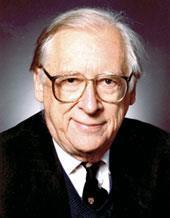
Pople was a pivotal figure in creating the first generation of software capable of performing rapid calculations to explain the structure of simple diatomic molecules. He laid the path to creation of Gaussian software, which became the bedrock of programming languages used by computational chemists. But the work of others also deserved recognition.
One such chemist was Samuel Francis (Frank) Boys - the first person to begin coaxing the embryonic computers of his day into creating an accurate picture of the nature of the chemical bond.
It was Boys who established a theorem to prove that a wavefunction for a molecular bond could be found with accuracy by superimposing a sufficient number of configurations. He demonstrated his theory by cracking the calculated structure of tritium (3 H) without the aid of a computer. In doing so he realised that to calculate more complex structures computers would be essential tools, and he was determined to fully embrace them.
Up close and personal
So who was Frank Boys? Born in 1911, colleagues knew him as a modest Yorkshire man educated at Pudsey Grammar School who went on to graduate in chemistry from Imperial College London in 1932. In his first year at Imperial he attended maths degree courses to acquire a working knowledge of quantum theory, but his first research paper was on the unrelated topic optical rotatory power (published in 1934).

His academic talents were spotted early and he moved to the University of Cambridge in 1935 to continue his work on his PhD. Here he became adept at quantum mechanical calculations, under the supervision of the physical chemist Thomas Martin Lowry.
On Lowry’s death, Boys was transferred to work with John Lennard-Jones. ’LJ’ was part of one of Europe’s most advanced groups of theoretical chemists who had their own way of thinking. The team included luminaries such as Charles Coulson and William George Penney, who were all thoroughly focused on work on chemical bond order and valence bond theory. For Boys, the new working arrangement was not too successful.
George Hall, emeritus professor of mathematics at the University of Nottingham, who worked with Boys recalls: ’Frank must have been an outsider even then because his own interests were so far removed from their own and his entry to the group was so induced.
’He fought for the rigorous approach to chemistry when it was against the grain. He often seemed alone. Chemists found him too mathematical and not willing to stoop to answer their problems.’
By 1938, Boys had his first academic appointment which took him away from any isolation he might have felt in Cambridge to Queen’s University Belfast. There he became an assistant lecturer in mathematical physics under Harrie Massey, the man credited with introducing Francis Crick to the x-ray crystallographer Maurice Wilkins.
With the outbreak of the second world war, the UK government called on Boys to move to the Ministry of Supply in Woolwich bringing him back into the orbit of Lennard-Jones. His war work was centred on explosives, particularly the study of munitions propellant during the acceleration phase of the shell along the gun barrel. Later he switched to the study of rocket fuels, both theoretically and experimentally.
Hall describes Boys as a shy individual with a quirky sense of humour. During his time at the Ministry of Supply his group refurbished a couch in the common room with springs made from the explosive cordite. Important visitors were invited to sit on the couch before being told what they were sitting on.
After the war
When the second world war ended, Boys took up an ICI fellowship back at Imperial College London. His focus was on producing wavefunctions that were accurate enough to predict important molecular quantities. This was the ultimate aim for computational chemists - to perfect the mathematics needed to precisely predict physical properties, and to apply the technique to ever more complex molecules.
Boys’s determination and total confidence in quantum mechanics meant he sought understanding of the transitory chemical species that were beyond the reach of contemporary theory. Radicals, ions and unstable molecular fragments were his target. He saw that if quantum mechanics could be applied to predict behaviour and reaction pathways, it would feed directly into any theory of reactions and reaction rates. In this he was far ahead of his time in his thinking.
In 1949, Boys was back with the theoretical chemistry team at Cambridge taking with him two female assistants whose sole job was to turn out integrals hour after hour using electronic calculators. Their work meant he was able to produce analytical wavefunctions for some simple atoms. His method was to build up the calculations based on a selected number of possible configurations of the molecule.
Boys adapted the method in a general way and recognised that it could be extended to even greater accuracy, but the calculations were expensive in terms of manpower (or in this case female power) and extremely slow. Fortunately times were changing.
The first computers
The war years had been a driving force in developing early computers such as Edsac (electronic delay storage automatic calculator) for encryption and code breaking. It was famous for calculating prime numbers - breaking the world record in 1951 with the first 79-digit prime number. Later, when hooked up to a cathode ray tube it was able to play a version of the game noughts and crosses. (Some computer historians claim this was the world’s first video game.)

These early computers would provide the impetus theoreticians needed to overcome the painstaking and time-consuming manual calculations needed to interpret bond parameters of simple atoms and molecules. Boys became expert at optimising many operations on the machine and his students soon became skilled in producing results against near impossible odds.
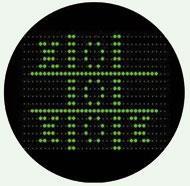
Boys was by now being relentlessly drawn into the embryonic world of computer programming. He attempted to design a computer language driven by his awareness of how these fledgling machines could be used to take over the burden of manual calculation.
Before the University of Cambridge upgraded to the second version of the Edsac, Boys realised he needed to learn to program this new machine in advance so he could fully exploit its power and speed before rivals for the machine’s time came knocking on the computer room door.
In those days every calculation Boys and his team carried out had to be checked. This meant running the entire calculation at a different time with no cross connection. It was the only way to confirm the accuracy.
As Pople himself acknowledged years later: ’I was late in recognising the role that computers would play in the field - I should not have been, for Frank Boys was continually urging the use of early machines back in Cambridge days.
’However, by 1964, it was clear that the development of an efficient computer code was one of the major tasks facing a practical theoretician and I learned the trade with enthusiasm.’
Boys always felt that his approach to quantum chemistry could be extended to other areas of science. His first work was on the use of Gaussian-type statistical functions in closed systems - ie systems when, for statistical purposes in the calculation of molecular structure, it is assumed that no ’external event’ comes in to play.
’He even tried to bring Gaussians into quantum field theory,’ wrote Hall in a retrospective on Boys published in the Journal of Molecular Physics in 1995, 23 years after Boys’s death.
’He knew that the subject was plagued by infinities which were sometimes the result of poor technique and sometimes poor modelling. His Gaussian treatment could get rid of some of these but when he talked to local experts about his proposed starting point they indicated that one infinity remained in the operators which he could not remove, so the entire treatment fell down. Nothing came of it but he was not downhearted.’
Avoiding crowds
Boys was a man utterly dedicated to his work, but he came to believe that most big conferences were a waste of time. It may have been a stubborn streak for which Yorkshire tykes are renowned, but according to Hall this behaviour may have stemmed from the unfortunate treatment he received at previous events.
He recalled one instance at a Faraday symposium in 1968 where Boys was presenting a new concept. The papers had been circulated in advance so the authors got little time to address the conference, and the time limit was upheld strictly.
In the middle of his discourse Boys was stopped by the chairman, who opened the meeting to questions. Hall recalls: ’I had the cheek to ask what had he been about to say when he was "stopped". This gave him at least another 10 minutes to explain his fascinating new ideas.’
Boys had a determination to make things work regardless of any difficulties. He would try things out repeatedly until he found something that worked. Some colleagues saw this as wasteful of his time, but Boys relished overcoming obstacles.
Beyond research
Boys also trained brilliant young students who themselves went on to enrich the subject; with at least three of his students later taking up academic chairs in computing.
In later years he began promoting science in developing countries, and set up a project designed to help them exploit their science internationally. He also studied economics and econometrics in a search for a more accurate theory of how wealth is created.
Perhaps he thought he could use his mathematical knowledge to create a better world economic system. One wonders what he would make of the economic tsunami that has swept through the financial system in recent years.
For all his achievements, Boys never attained a professorship. There are hints that he antagonised the wrong people, or that some of his academic colleagues were jealous of his ability to manipulate the new computers that were so essential to their work.
Hall said of Boys: ’his mistrust of semi-empirical theories and his refusal to guess at results often isolated him from many colleagues, so Frank was occasionally the object of biting attacks.’
The truth is that regardless of his low profile our understanding of the molecular world owes much to Boys, the Yorkshire man with the grit to harness the limited computer power available at the time and to show the importance of integrating computing and numerical techniques with quantum equations. It is thanks to him that today we can design molecules to perform circus tricks in the diverse worlds of pharmaceuticals, bioengineering and nanotechnology.
Dermot Martin is a science journalist based in Dorset, UK
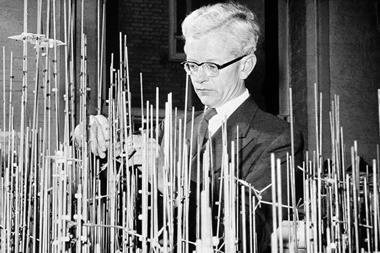
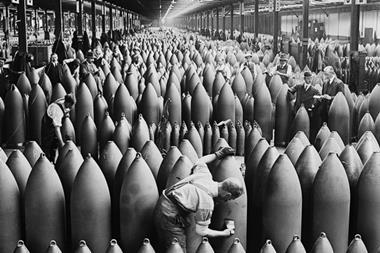
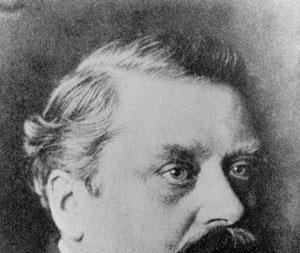









No comments yet